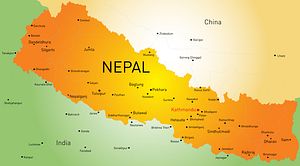On the heels of Indian Prime Minister Narendra Modi’s reinvigorated regional diplomacy, representatives from the Indian and Nepali survey offices sat down this week in Kathmandu, Nepal to work out border disputes that have risen as the frontiers between the two countries become increasingly blurry.
India’s commitment to keep an open and accurate border is another indicator of Modi’s interest in regional security. Modi’s attaché arranged the talks when they visited Kathmandu in August.
The two countries are revisiting the issue after seven years. The previous mandate, which was in effect from 1981 to 2007, saw the countries settle 97 percent of border discrepancies using modern technology.
The topic of the border with India is a hot-button issue in Nepal; many feel that the current border does not protect Nepali sovereignty. There are a couple swathes of land that both countries claim.
But with renewed talks comes new hope that India will focus its attention and investment in its backyard. Earlier this month, the two countries signed the Indo-Nepal Power Trade Agreement, which appears more favorable to water-rich Nepal than previous agreements.
“[Modi] was speaking the language people wanted to hear,” Nepali journalist and commentator Drubha Hari Adhikari said. “He thinks it is significant to have a neighborhood in good humor.”
And an emotional issue for Nepal is to have a respected border. Nepalese are conscious of the fact they lost nearly a third of their land to the British Raj in the 1816 Sugauli Treaty, according to Buddhi Shrestha, former Surveyor General of Nepal.
Two areas in particular strike a chord in Nepal: Kalapani and Susta, which lie on the western and eastern border of Nepal, respectively.
Kalapani, which is where India, China, and Nepal meet, has a strategic military position and has been held by India’s Indo-Tibetan border security forces since the 1962 war with China. The Mahakali River defines the border in Kalapani, but India and Nepal each claim the river originates in different places, thus the conflict.
In eastern Susta, the Narayani river forms the Indian-Nepali border. But several large floods have re-shaped the river, causing a 14,500 hectare Indian encroachment into Nepal. Here, again, Nepalese are sensitive to the perceived threat to their sovereignty. According to reports, lands disputes among locals are usually won by Indian nationals who have the support of the armed Indian Border Police Force (Seema Sashastra Bal) SSB.
But the renewed border talks are a start. The surveyors concluded the meetings on Friday with a tentative schedule for inspecting the current border and clearing the 20-yard “no-man’s land,” onto which shops and farmers have encroached. They are also developing a system to address cross-holdings and local land disputes. As a result of the redefined border, people living along the frontier may soon find their land has changed countries. Families who find their land has switched nationalities will be given options to accept compensation for their land and move, or switch nationalities.
The Boundary Working Group also may pave the way to settle disputed lands once and for all. It will provide technical support if diplomatic-level talks happen. But the disputed areas would require more than just the surveyors from the two countries meeting. Buddhi believes these disputes are above the jurisdiction of the surveyors. “They need to be settled at the prime ministerial level,” he said.
During his visit, Modi indicated he is willing to hear Nepali Prime Minister Sushil Koirala on issues like this. According to Adhikari, the Indian prime minister’s “early indicators are encouraging.” In a speech he gave to Nepali politicians, he indicated he would be willing to consider just about anything for his neighbors, even mentioning the 1950 Treaty of Peace and Friendship, which is widely resented in Nepal for the many liberties it gives to India. He also promised to stay out of the internal affairs of Nepal, a promise that many in Nepal are waiting to see to believe.
For Modi, his reinvigorated regional relations are an effort to shore up security threats regionally. As South Asian foreign affairs expert Pramod Jaiswal points out, Nepal is a security concern for India. The country does not have a stable government, and until it does will be seen as a security risk. China’s rising influence in Nepal may also be of concern. This year, the northern neighbor supplanted India as the largest source of foreign direct investment.
Stephen Groves is a freelance writer currently based in Kathmandu, where he is also involved in social business. He previously reported on American politics in Washington, D.C.

































